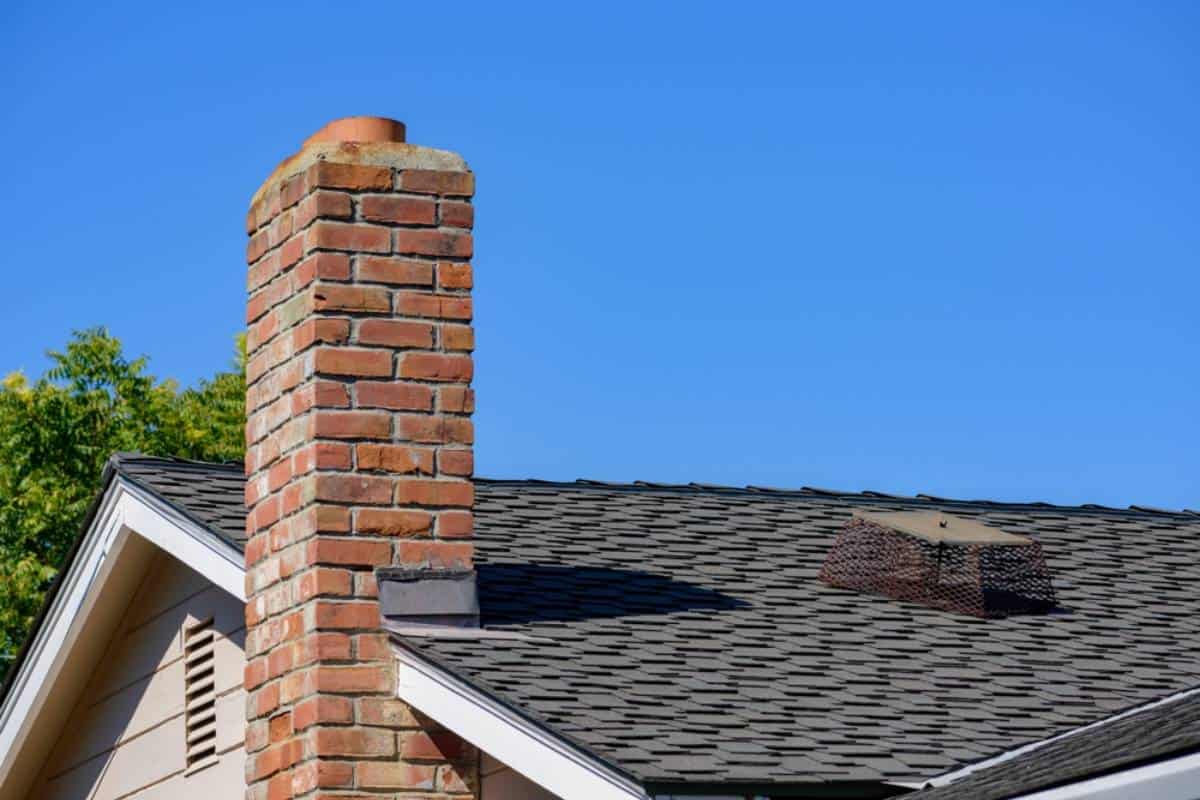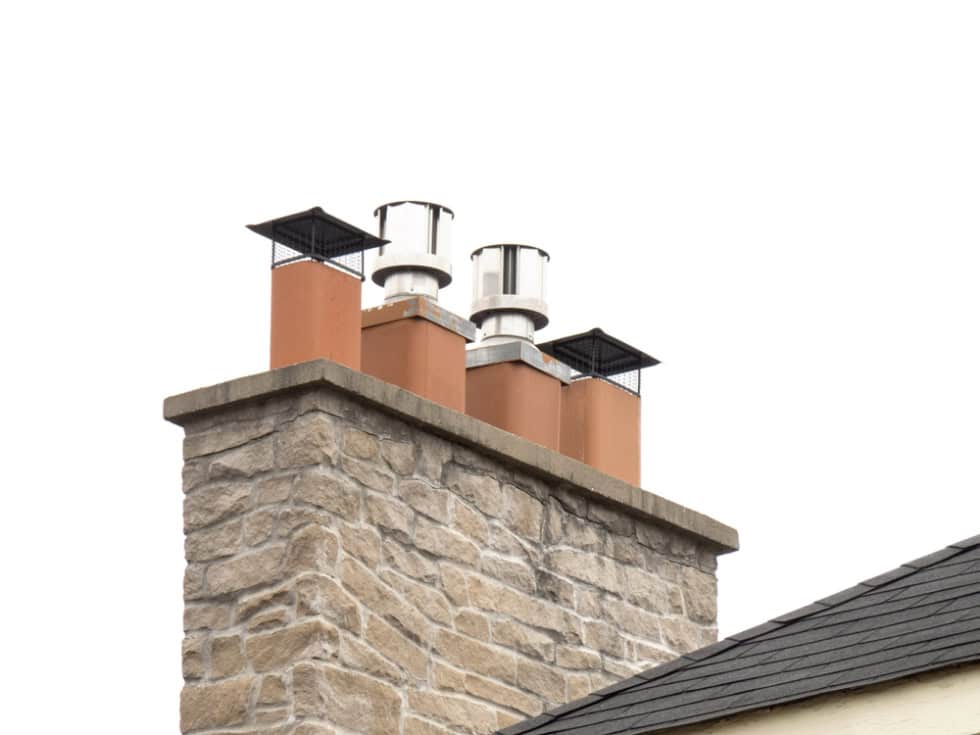
Summary:
Rhode Island’s coastal environment presents specific challenges for chimney maintenance, with salt air affecting masonry and freeze-thaw cycles creating problems other contractors miss. Your chimney faces conditions that demand more than basic installation techniques.
Rhode Island building codes require liners for solid-fuel systems because your liner is the only barrier protecting your home’s structure from 2,000-degree combustion gases. Without proper installation, these gases seep into your chimney walls, causing deterioration and creating serious fire hazards.
The stakes are higher here than in many other regions. In Rhode Island’s coastal climate, stainless steel significantly outperforms clay tiles that crack from freeze-thaw cycles and aluminum that corrodes from salt air.

The internet makes chimney liner installation look straightforward. Videos show homeowners dropping flexible liners down chimneys in what appears to be a weekend project. But installing a flue liner is not a job for DIYers, as there are several considerations that must be answered before a new liner can be installed.
The major concern beyond obvious fire hazards is carbon monoxide—an improperly installed or sized flue can be a silent killer. You can’t see, smell, or taste carbon monoxide. When your liner isn’t properly sized for your appliance or fails to seal correctly, deadly gases enter your living space instead of venting safely outside.
A chimney liner that is not properly installed can lead to major safety issues within the home and can lead to chimney fire, property damage, and serious risks of personal injury or death. The National Bureau of Standards found that unlined chimneys allowed heat to move through the chimney so rapidly that adjacent woodwork caught fire in only 3½ hours.
Professional installation goes far beyond dropping a liner down your chimney. The existing flue must be cleaned completely and inspected with a camera to determine mortar joint condition, entry points must be inspected and properly sized, and when adding a liner to an old chimney, all old tile liners must often be removed to ensure proper drafting and sizing.
Even experienced general contractors recognize these complexities. One general contractor stated “I am a general contractor and wouldn’t consider doing that job myself, I always hire a certified chimney specialist.”
Professional chimney liner installation requires specialized knowledge, tools, and safety equipment that most homeowners don’t possess. The process involves taking precise measurements for your specific appliance and chimney dimensions, preparing the chimney by removing old clay tiles if necessary and making repairs, carefully inserting and connecting the new stainless steel liner at both ends with proper sealing, testing draft and safety, then cleaning up completely, with most installations taking 4-8 hours.
The sizing alone requires expertise most homeowners lack. An incorrectly sized flue liner can cause safety and performance issues, and many homes have liners that do not meet the size requirements for their heating appliance. Get this wrong, and your system won’t draft properly, leading to poor performance and potential safety hazards.
Professional installation also includes proper insulation when needed. Stainless steel chimney liners allow room for adding insulation, and by adding insulation around the liner, the temperature in the chimney stays warmer, making smoke and gases more likely to remain gaseous until they exit rather than condensing as creosote deposits.
We understand Rhode Island’s specific challenges. We install premium 316Ti stainless steel liners that resist corrosion from Rhode Island’s salt air and acidic flue gases—heavy-duty systems designed for decades of service rather than thin-wall liners some contractors use.
Want live answers?
Connect with a Certified Chimney Inspections expert for fast, friendly support.
When properly installed by certified professionals, stainless steel chimney liners deliver benefits that extend far beyond basic safety compliance. Your heating system drafts properly, cutting fuel costs by up to 15%, while dangerous gases vent safely outside instead of seeping into your living space.
A stainless steel liner significantly extends the life of your chimney by protecting the masonry walls from intense heat and corrosive combustion byproducts, including acids and moisture that can deteriorate masonry over time. This protection prevents the costly repairs that result from heat damage to your chimney structure.
The durability factor matters especially in Rhode Island’s climate. Quality stainless steel liners last 15-20 years minimum with proper maintenance, and premium grades often perform well for 25+ years, with the key being annual cleaning and inspection to remove corrosive creosote buildup.

Professional installation ensures your liner performs as designed for decades. The liners lower your chances of a chimney fire by reducing the accumulation of creosote, which is highly flammable. This protection becomes especially important during Rhode Island’s heating season when you’re relying on your system most heavily.
Stainless steel liners are significantly easier to clean than clay tiles and collect less creosote, with their round shape meaning no corners and easier creosote cleanup. This makes annual maintenance more effective and less expensive over time.
The energy efficiency benefits compound over years of use. Cold chimney downdrafts make it more challenging to start and maintain fires, and an inefficient fire due to a cold flue increases soot and creosote residue, but a stainless-steel liner with insulation reduces cold drafts while retaining more heat, increasing energy efficiency.
Professional installation also includes proper connections and sealing that prevent the problems DIY installations often create. A properly installed liner does what it’s supposed to do—protect your home’s structure from heat damage while keeping combustion gases where they belong.
Professional chimney liner installation represents one of the best returns on investment among home improvement projects. Most homeowners see the investment pay for itself through improved heating efficiency and prevented damage, with better draft meaning lower fuel costs and avoiding expensive repairs from heat damage to chimney structure.
A well-maintained chimney with a modern stainless steel liner is a desirable feature for potential homebuyers and may even add value to your property. When you eventually sell your home, buyers recognize the value of a professionally installed, code-compliant chimney system.
The cost comparison becomes clear when you consider the alternatives. Chimney liner installation in Rhode Island typically runs $1,500-$4,000 depending on chimney height, diameter, and liner type needed, with a standard 6-inch stainless steel system averaging around $1,750, with costs breaking down to materials ($800-$2,000), labor ($400-$1,250), and inspection/preparation ($200-$500).
Compare this to the potential costs of chimney fires, carbon monoxide incidents, or major structural repairs from heat damage. Professional installation isn’t an expense—it’s protection for your most valuable asset.
The warranty coverage that comes with professional installation provides additional peace of mind. Most professional installations include detailed warranties covering materials and workmanship, something you’ll never get from a DIY project.
Your family’s safety isn’t worth the risk of DIY installation. It is not worth the safety of your home and family to cut corners, as improper installation could lead to chimney fires that cause property damage, home loss, and even personal injury or death.
Professional installation ensures compliance with Rhode Island building codes and provides the expertise needed for your coastal environment. With over twenty years serving Rhode Island, we understand how coastal moisture affects chimneys, and we know what salt air does to masonry and how freeze-thaw cycles create problems other contractors miss.
When you’re ready to protect your home with professional chimney liner installation, we bring over two decades of experience to every project. Our CSI-certified technicians understand Rhode Island’s unique challenges and install only premium materials designed for your climate conditions.